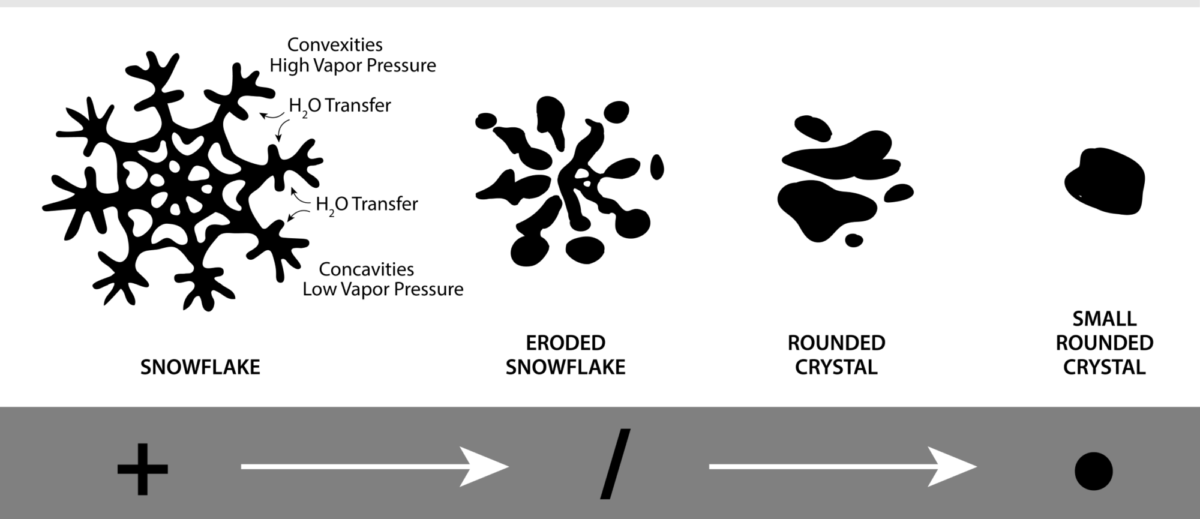A metamorphic process that causes snow grains to become smaller, more spherical, and form stronger bonds.
Rounding occurs under weak temperature and vapor pressure gradients that are most common when the snowpack is relatively deep and warm. Under these conditions water vapor is preferentially deposited either between snow grains, helping them to bond, or in concavities of snow crystals. Rounding makes a snow layer more compact and stronger. A snowpack that is uniformly rounded is not an issue; in fact, that is the ideal situation for safe avalanche conditions. However, a problem arises when you have rounded snow grains forming a strong, cohesive slab over a weaker layer like facets or depth hoar that is slower to gain strength. You can identify rounded grains in a snowpit by observing their shape under a hand lens; they often resemble peanuts clustered together. If you bounce them in your gloved hand, they tend to clump together like flour, rather than bounce and fall through your fingers like sugar.

